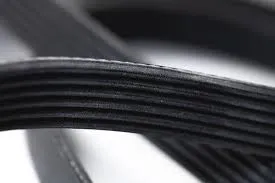- Arabic
- French
- Russian
- Spanish
- Portuguese
- Turkish
- Armenian
- English
- Albanian
- Amharic
- Azerbaijani
- Basque
- Belarusian
- Bengali
- Bosnian
- Bulgarian
- Catalan
- Cebuano
- Corsican
- Croatian
- Czech
- Danish
- Dutch
- Afrikaans
- Esperanto
- Estonian
- Finnish
- Frisian
- Galician
- Georgian
- German
- Greek
- Gujarati
- Haitian Creole
- hausa
- hawaiian
- Hebrew
- Hindi
- Miao
- Hungarian
- Icelandic
- igbo
- Indonesian
- irish
- Italian
- Japanese
- Javanese
- Kannada
- kazakh
- Khmer
- Rwandese
- Korean
- Kurdish
- Kyrgyz
- Lao
- Latin
- Latvian
- Lithuanian
- Luxembourgish
- Macedonian
- Malgashi
- Malay
- Malayalam
- Maltese
- Maori
- Marathi
- Mongolian
- Myanmar
- Nepali
- Norwegian
- Norwegian
- Occitan
- Pashto
- Persian
- Polish
- Punjabi
- Romanian
- Samoan
- Scottish Gaelic
- Serbian
- Sesotho
- Shona
- Sindhi
- Sinhala
- Slovak
- Slovenian
- Somali
- Sundanese
- Swahili
- Swedish
- Tagalog
- Tajik
- Tamil
- Tatar
- Telugu
- Thai
- Turkmen
- Ukrainian
- Urdu
- Uighur
- Uzbek
- Vietnamese
- Welsh
- Bantu
- Yiddish
- Yoruba
- Zulu
nov . 10, 2024 03:15 Back to list
Understanding the Mechanics and Applications of Flat Transmission Belts in Engineering Systems
Understanding Flat Transmission Belts
Flat transmission belts have become essential components in various mechanical systems, facilitating the efficient transfer of power between rotating shafts. These belts are characterized by their flat, rectangular profile, allowing for effective engagement with pulley systems. In this article, we will explore the design, applications, advantages, and challenges associated with flat transmission belts.
Design and Composition
Flat transmission belts are typically made from materials such as rubber, leather, or synthetic composites. The choice of material depends on the specific application requirements, such as load capacity, environmental conditions, and temperature resistance. The flat design allows for a larger surface area of contact with the pulleys, which helps in distributing the load evenly and reducing wear and tear over time.
The width and thickness of the belts can vary significantly based on their intended use. For example, heavier machinery would require wider belts to handle higher loads, while lighter applications may utilize narrower belts. Additionally, the stiffness and flexibility of the material are crucial, as they need to withstand the stresses of rapid motion and varying temperatures.
Applications
Flat transmission belts are widely used in various industries due to their versatility and reliability. Common applications include
1. Agricultural Machinery In farming equipment, flat belts are used to transfer mechanical power from engines to various components, such as harvesters and tractors.
2. Manufacturing Systems In factories, these belts play a crucial role in conveyor systems and machine drives, moving materials and products efficiently along assembly lines.
4. Woodworking Equipment In sawmills and woodworking machinery, flat belts help operate saws and other tools, providing the necessary torque and power.
5. Commercial Appliances From printers to food processing machines, flat belts are employed to maintain the functionality of various appliances.
flat transmission belt

Advantages of Flat Transmission Belts
Flat transmission belts offer several advantages over other types of power transmission methods, including
- High Efficiency Their design allows for minimal slippage and optimal power transfer, making them highly efficient.
- Low Cost Compared to chain drives and more complex systems, flat belts are generally cost-effective to manufacture and maintain.
- Reduced Vibration Flat belts operate smoother than chain or gear systems, minimizing vibration and noise, which is particularly beneficial in environments requiring precision.
- Easy Installation and Maintenance The installation process for flat belts is straightforward, allowing for easy replacement and adjustment when necessary.
Challenges and Limitations
Despite their benefits, flat transmission belts come with some challenges. One of the primary concerns is wear and tear, as the continuous friction against the pulleys can lead to degradation over time. Therefore, regular inspection and replacement are necessary to ensure optimal performance.
Another limitation is their susceptibility to environmental conditions. Extreme temperatures, humidity, or exposure to certain chemicals can adversely affect the belt's material properties, leading to failures. It is essential to select the right materials for the specific operating conditions to mitigate these issues.
Conclusion
Flat transmission belts play a critical role in various industrial applications, providing reliable and efficient power transfer mechanisms. Their simple design, coupled with numerous advantages, makes them suitable for an extensive range of uses. However, it is crucial for users to be aware of the potential limitations and maintenance needs associated with these belts. By doing so, they can ensure a longer service life and optimal performance in their applications. As technology continues to evolve, we can expect further innovations in the design and materials used for flat transmission belts, expanding their capabilities and applications in the future.
-
Flat Drive Belts for Sale – Durable & High Performance
NewsAug.11,2025
-
Precise Timing Belt Operation: Function & FAQ Guide
NewsAug.10,2025
-
Precision Double-Sided Toothed Endless Flat Drive Belts
NewsAug.09,2025
-
Durable Tooth Belts: Precision Power for Poly V Belt Drives
NewsAug.08,2025
-
Reliable Diesel Engine Belts & Tensioners for Optimal Performance
NewsAug.07,2025
-
23100-KVB-901 Drive Belt for Honda VARIO | OEM Performance
NewsAug.06,2025

